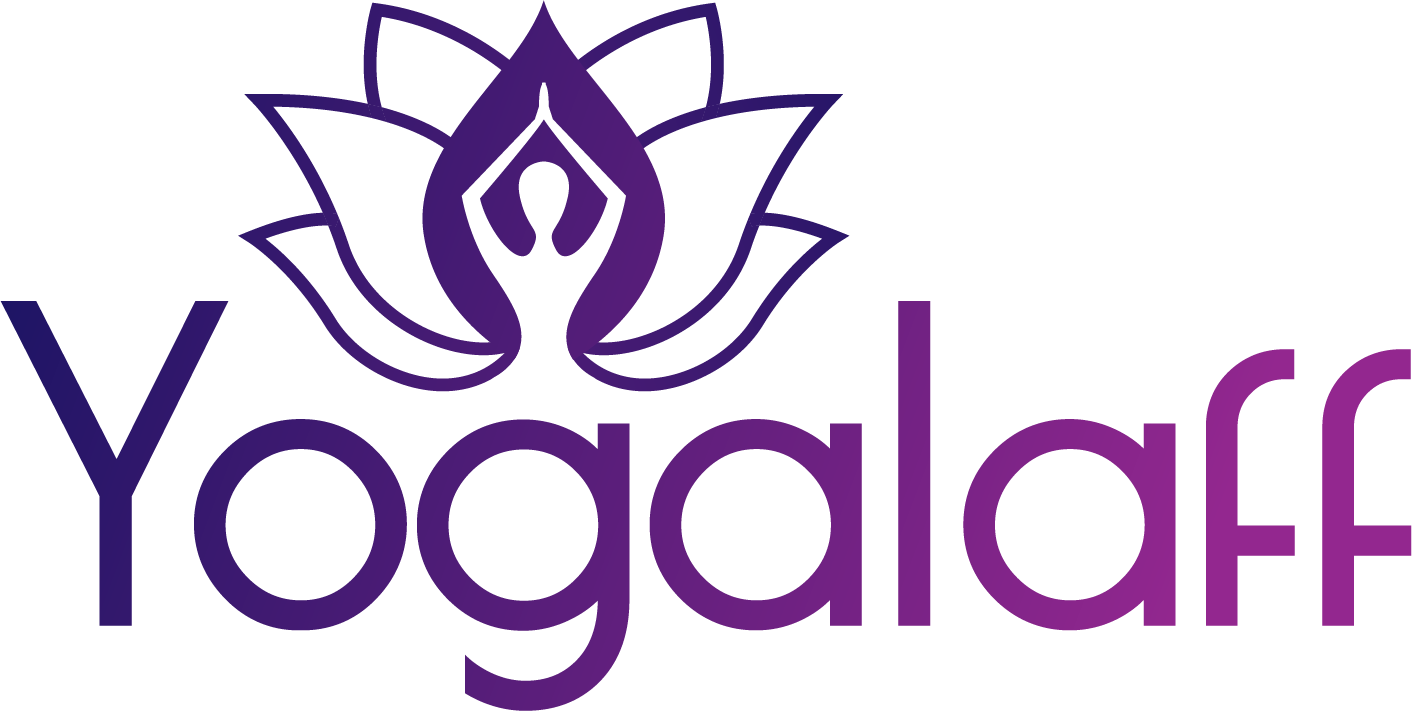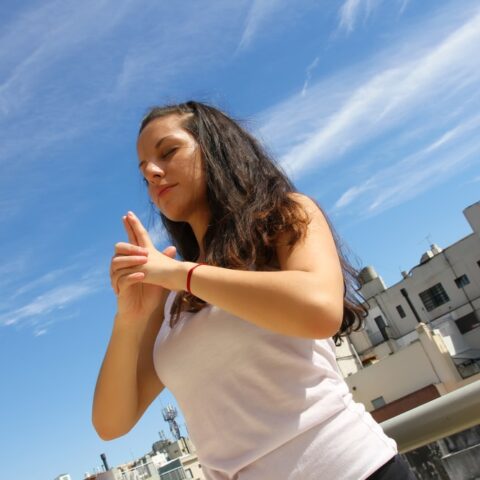Seated cross-legged isn’t the only good posture for meditation. Buddhist teacher B. Alan Wallace, for example, is a supporter, in certain circumstances, of the supine position.
Equally, standing upright can be perfectly appropriate. This short article outlines two different “standing meditations” with some videos at the end.
If you’re in a rush, watch the Kim Eng video. The first method given here is based on traditional Tai Chi standing practices.
Whatever the circumstances, whether you’re outside, have trouble sitting with your legs crossed or even if you simply enjoy standing, I hope you’ll find a suitable practice.
Jump to: Full Body Breathing | Shoulder and Head Rolls
Full Body Breathing
- Stand with your legs shoulder-width apart, feet parallel.
- Let your arms hang at your sides, relax your neck and shoulders. You may also want to loosen your knees and any other parts of your body where there is tension.
- Let your attention rest for a few moments on the sensations at the base of your feet (at the point of contact with the ground) and on the crown of your head. You might prefer to focus specifically on what is called the “bubbling spring” point of your foot.
- On the inhalation, sense your breath rising into your feet, through your body, and out through the crown of your head.
- On the exhalation, sense your breath moving from your head, down through your body and out through your feet into the ground.
- Keep the sensations along your spine in mind. You may notice a soft straightening on the in-breath.
- You can visualize the breath in any way that you want, as a ray of light or stream of water, or simply just experience the sensations. If you are having a great deal of trouble, simple focus on the point where you want the breath to go, either the feet or the crown of your head.
- Repeat this as many times as you want. It can be done discretely if you are waiting in a queue or in a public place.
Shoulder and Head Rolls
Not a meditation per se, but a relaxing practice that can be done anywhere. It’s especially useful to combat the tension that’s caused by sitting down all day.
- Standing with legs shoulder-width apart, softly straighten your spine (I recall the analogy of adopting the posture of a lord or lady). Be loose and relaxed.
- Let your head tilt forward so that it is almost touching your chest.
- On your next inhalation roll it slowly halfway around, so that you are almost facing the ceiling.
- On the exhalation roll it forward to the starting point.
- Do this as many times as you like. Remember: slowly and gently.
- Repeat this process with your shoulders, bringing them forward and up on the in-breath, and backward and down on the out-breath. Feel free to reverse this process (backward and up) several times.
- This can be used as a preliminary practice to the one above.
Guided Standing Meditation Techniques
While there are many ways to meditate, standing meditation is one of the simplest and most effective methods of meditation. It is a great way to strengthen the body while becoming one with your body and ultimately feeling more relaxed.
You can meditate while standing straight in a certain way for as little as 10 minutes to reap some of the benefits, although most people choose to meditate a bit longer to enjoy the full experience.
There are a few different steps you will need to follow if you want to make the most of standing meditation.
- Search for a good place to practice your meditation. You should look for an area where you can stand comfortably without dealing with any interruptions. If there is a quiet room in your home, consider meditating inside that room while staring out through the window.
- Make sure that when you are standing straight, your feet are spread out and pointing directly in front of you. Slightly bend the knees just a bit while putting the weight of your body on your feet.
- Find a focal point in front of you and stare at it. If you are not sure what to stare at, you should find a window or a beautiful painting inside the home and look at it while keeping your head straight and relaxing your facial muscles.
- Move your lips just a bit, as if you were lightly smiling at someone or something in front of you.
- Begin moving your hands forward and in front of you while making sure your palms are facing one another as you bring your fingertips together to touch, leaving plenty of space between your arms.
- Start inhaling for a few seconds, hold it in, and then exhale. If you are feeling uncomfortable, adjust your body a bit so that you will feel more relaxed and at ease.
- Picture yourself somewhere relaxing, such as on the sand by the ocean.
- Remain still, continue staring directly at the window or anything else you were looking at when you first got started, and continue standing straight.
- Once you have found a comfortable position, stay put. It helps to stay in the same position for at least 10 minutes, but you can continue standing for as long as you like.
Additional Standing Meditation Tips and Tricks That You Need to Know
When you are standing for such an extended period without any distractions, you are going to start noticing things that are going on around you. You become more aware when you are no longer distracted and are more relaxed due to meditation.
If you are starting to feel uncomfortable while standing, try to make small adjustments instead of just giving up and sitting down. In fact, you may want to take a few deep breaths, inhaling and then quickly exhaling while thinking of something that helps you relax, such as the beach.
When you start to experience that life energy flowing through you, there is a possibility you will have the sudden urge to move your body. It is completely normal, so let it happen if it needs to. Not everyone will get the urge to move when they are standing in one spot, but some people will.
You may have a difficult time standing for more than 10 minutes in the beginning. However, you should set a goal to continue working on it while trying to stand for longer periods.
If you truly want the qi to make its way through your body, you will need to complete at least 30 minutes of standing meditation, which is why it is so important to work your way up to that amount of time.
What’s Needed to Get Started?
You will only need your body and a quiet, relaxing place to go, ideally somewhere in your home where you will be free of all distractions that could potentially get in your way.
Resources
- The Healing Power of the Breath by Richard P. Brown and Patricia L. Gerbarg.
- The TAO of Natural Breathing by Dennis Lewis.

